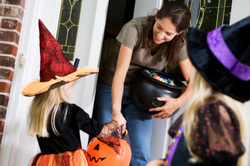 From sensory difficulties, to understanding the social conventions of taking one piece of candy... trick or treating can be very difficult for our friends with special needs. Here are some ways to help ease the stress and make Halloween a little sweeter for everyone! Practice
Consider the costume
Set the expectation
Timing is everything
HAVE A FUN AND SAFE HALLOWEEN!!
0 Comments
Kids love to throw. Here are some fun and interactive ways to teach the word "throw" to beginning language learners at the 1-3 word level:
As always, make sure to vary the context to prevent "chunked phrases" such as the word throw always being said as "throw ball." "I've learned that you shouldn't go through life with a catcher's mitt on both hands; you need to be able to throw something back." Maya Angelou |
Welcome!Check in often for language tips and creative ways to bring language to life in your home or business! Archives
August 2016
Categories
All
|
Photos from diekatrin, Suzanne_C_Walker, rolfekolbe

 RSS Feed
RSS Feed